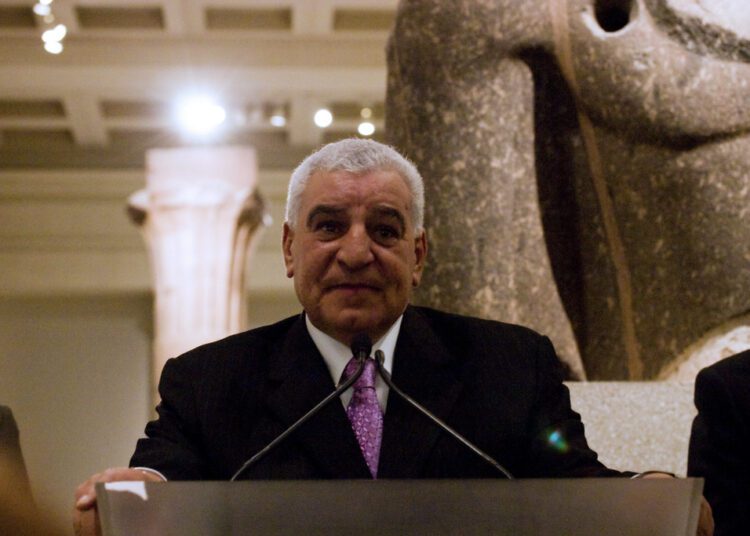By Moustafa Allam and Ahmed Shady
Some of the world’s most famous museums are in possession of stolen goods. Consider the statuary and obelisks in Europe that once stood pride of place in Egypt. However, adventurers, conquerors and collectors took artefacts home. Two centuries on, Egypt wants them back.
Last week, the Egyptian Embassy in Italy received two artifacts dating back to the Graeco-Roman era. Smuggled from Egypt into Italy, the first piece is a pottery bust of a woman, the second a small vessel with a wide mouth and a handle that connects the mouth to the body, the Foreign Ministry said in a statement last Thursday.
In January this year, almost 5,000 Egyptian artifacts held by the Holy Bible Museum in Washington were handed back.
According to the General Supervisor of the Retrieved Antiquities Department, Shaaban Abdel-Gawad, the Ministry of Tourism and Antiquities has succeeded in retrieving the artifacts, following intensive work with the American authorities for over five years.
Last February, the Egyptian parliament approved amendments to the Egyptian Antiquities Law, which state that “anyone who steals an antiquity or parts of it will be punished with life imprisonment, and a fine of no less than LE1 million pounds and no more than LE5 million pounds”.
Egyptologist Dr Zahi Hawass, member of the National Committee for the Repatriation of Stolen and Smuggled Antiquities, said that the committee in coordination with the state authorities is working hard to retrieve such smuggled antique pieces, despites UNESCO’s prejudiced stance towards this issue.
“As per a UNESCO agreement, artifacts smuggled before 1970 cannot be retrieved,” Hawass told Egyptian Mail, the weekly edition of The Egyptian Gazette.

UNESCO enacted in 1970 the Convention on the Means of Prohibiting and Preventing the Illicit Import, Export, and Transfer of Ownership of Cultural Property. According to the agreement, artifacts are the property of their country of origin and pieces smuggled out must be returned.
However, the agreement does not apply on the artifacts smuggled before that date, he told this newspaper. To date, 131 countries have signed the agreement.
“Such laws push the national committee and the State to engage in prolonged fights and to search for the stolen artifacts at the antiquities and auction galleries,” he said.
As the political leadership is paying due attention to preserving the country’s heritage, the Ministry of Foreign Affairs is working side by side with the Ministry of Tourism and Antiquities.
Egyptians artifacts are on display in many museums in different countries. For example, the British Museum in London has more than 100,000 Egyptian items.
Also, the Neues Museum in Berlin has about 80,000 artifacts including the famous Bust of Nefertiti. The Louvre Museum in Paris, also, contains about 50,000 items.

On the total number of stolen artifacts, Hawass said, “There is no confirmed data on the number of antiquities that have been out of the country illegally”. He pointed out that the government works round the clock to curb and prevent such a phenomenon.
Artifacts are everywhere in Egypt, and people unlawfully excavate for antique pieces, and then smuggle them immediately, a matter that makes it hard to count the smuggled artifacts, Hawass said.






Discussion about this post